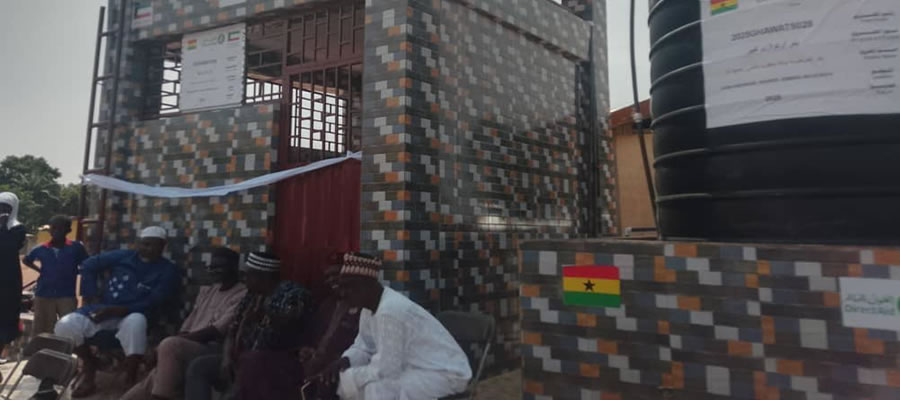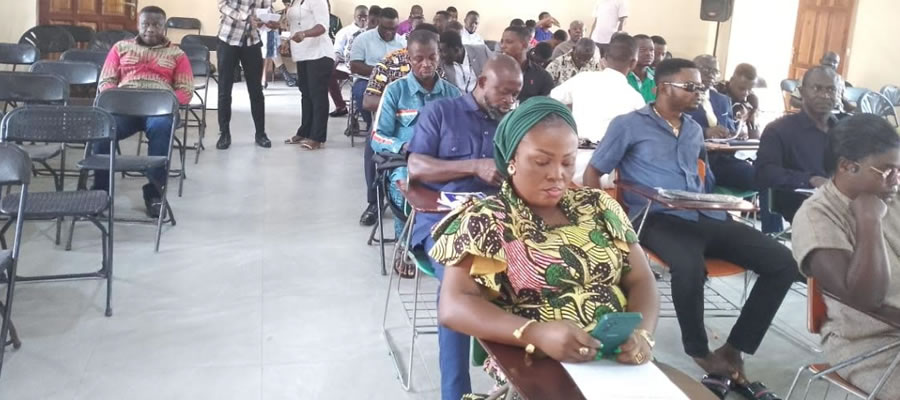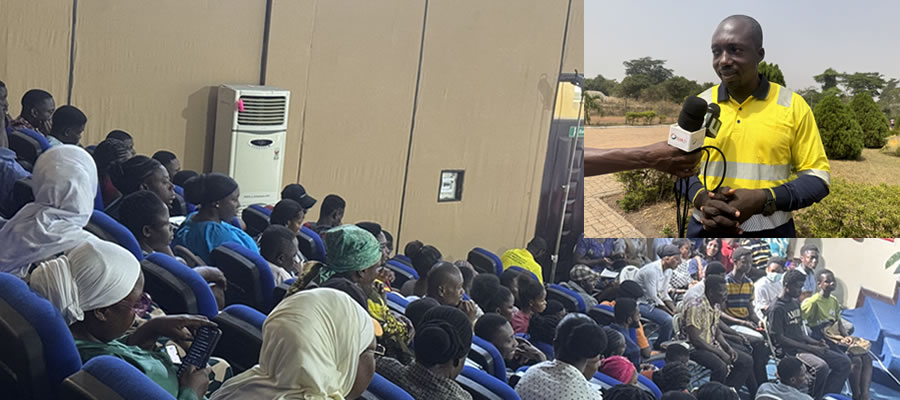

Introduction
Population size and age-sex composition have broad ranging consequences for a number of socio-economic indicators such as the welfare of the people. The changes in population are mainly through fertility, mortality and migration levels, which to a large extent, are influenced by age-sex composition. The objective of this chapter is to analyse the size, composition, age and sex structure, as well as the fertility, mortality and migration of the Ejisu-Juaben Municipality with reference to the 2010 Population and Housing Census.
Population Size and Distribution
Table 2.1 shows that the population of the Municipality is 143,762 comprising 68,648 (47.8%) males and 75,114 (52.2%) females. The data reveals that majority 104,197 (72.5%) of the population are in the rural areas while 39,565 (27.5%) of the population are in urban areas.
The sex ratio (males to females) of the Municipality is 91.4. This means that for every 100 females, there are about 91 males. The sex ratio of the Municipality is lower than the regional average of 94.
The total population has been grouped into different age groups from 0-14 (children population), then 15-64 (population in the working age group) and 65+ (the aged population). More than half (55.1%) of the total population falls within the working population, about two-fourth (39.8%) falls within the children’s population and 5.1 percent fall within the aged population. The sex structure shows that females (56.4%) form a slightly higher percentage of the working population than females (53.7%). The aged female population, (6.1%) are also in higher proportion compared with the aged male population (4.0%). However, the proportion of male children (42.3%) is higher than the proportion of female children (37.5%) in the Municipality (Table 2.1).
Dependency ratio
The age dependency ratio is the ratio of the dependent population (those under age 15 and 65 years and older) to the population in the working age group (15 to 64 years). The age dependency ratio is often used as an indicator of the economic burden the productive population must carry. The higher the ratio is, the more a potential worker is assumed to be supporting and vice-versa. From Table 2.1, the age dependency ratio for the Municipality is 81.4 percent. This means that 100 persons in the working group look after approximately 81 persons in the dependent population. The age dependency ratio for males (86.2%) is higher than for females (77.2%). The age dependency ratio for rural areas (86.0%) is slightly higher than that of urban areas (70.2%).
Age-Sex Structure
Figure 2.1 shows a population pyramid of Age-Sex Structure of the Municipality. The pyramid shows a decrease in population with advancing age. The wider the bar, the more people are there in that age group. Thus, the age-sex structure is broad based, with concentration of the population in younger ages, comprising the age group of 0-19 (50.3%); for both males (53.2%) and females (47.6%). This shows that the Municipality has more youthful population. The pyramid exemplifies the national and the regional age structure with the greater number of the population falling within the age group 0-19 (See the 2010 PHC, National Analytical Report page 56).
Environmental Situation
Environment, according to geographers means the sum total of conditions that surround man or any living being at any one point or a particular place on the earth’s surface. The total conditions include water bodies, minerals, trees and forest. The quality of both the built and the natural environments is vital for long-term growth and development. Increased production can only be meaningful on the one hand when it occurs in well-managed, amenable, efficient, safe and healthy built environments.
On the other hand, protection of the natural environment to prevent deforestation, land degradation, and loss of ecosystems is paramount. A major issue currently under consideration in planning for development is the environment. This is because; it is now obvious that every development project has its environmental implications.
The natural is the one without man’s intervention or without the intervention or activities of man taking place. Examples are flora and fauna representing plants and animals respectively. Below are the environmental problems caused by:
Rainfall patterns—
Erosion is one of the environmental problems caused by rainfall pattern in the district. The district receives heavy torrential rains with the annual rainfall average between 1200mm and 1500mm. The rainfall pattern in the district has resulted in erosion in some of the communities; examples include Besease, Kokobra, Kwaso and Ejisu among others. The depletion of the forest stock because of excessive lumbering, destructive agricultural practices, mining and bush burning have all led to the deteriorating of the land exposing the bare land surface leading to erosion. Another environmental problem cause by the rainfall pattern in the district is the outbreak of black pod to cocoa pods.
Use of energy sources
Air pollution is one of the environmental problems cause by the use of the energy sources in the district. This pollution comes from the mining activities as well as fuse from vehicles.
Impact of human activities.
Deforestation due to unfriendly farming practices and operations.
Air pollution: fuse from vehicles, and garages firms.
Loss of soil fertility due to farming on the same piece of land continuously.
Cutting down of trees thereby affecting the climate.
Another environmental pollution is waste disposal. Most of the settlements lack waste disposal facilities and dump refuse indiscriminately. Implications of the Physical Features for District Development The physical characteristics of the District such as relief, climate, soil and vegetation, and water resources offer tremendous potentials for the development of the District. Its positive impact could be summarized as follows:
Water for irrigation purposes, for example Anum Valley rice production Extraction of mineral and clay deposit to offer employment and revenue generation to the District. The natural environment offers rich tourist potentials. For example the beautiful Bobiri Forest Reserve with its butterfly sanctuary is a place worth seeing by any tourist who visits the Ejisu-Juaben District. In spite of these potentials, illegal felling of trees, sand winning activities and bush fires are fast degrading the environment and soil quality.
Date Created : 11/25/2017 5:38:40 AM













 facebook
facebook
 twitter
twitter
 Youtube
Youtube
 +233 593 831 280
+233 593 831 280 0800 430 430
0800 430 430 GPS: GE-231-4383
GPS: GE-231-4383 info@ghanadistricts.com
info@ghanadistricts.com Box GP1044, Accra, Ghana
Box GP1044, Accra, Ghana